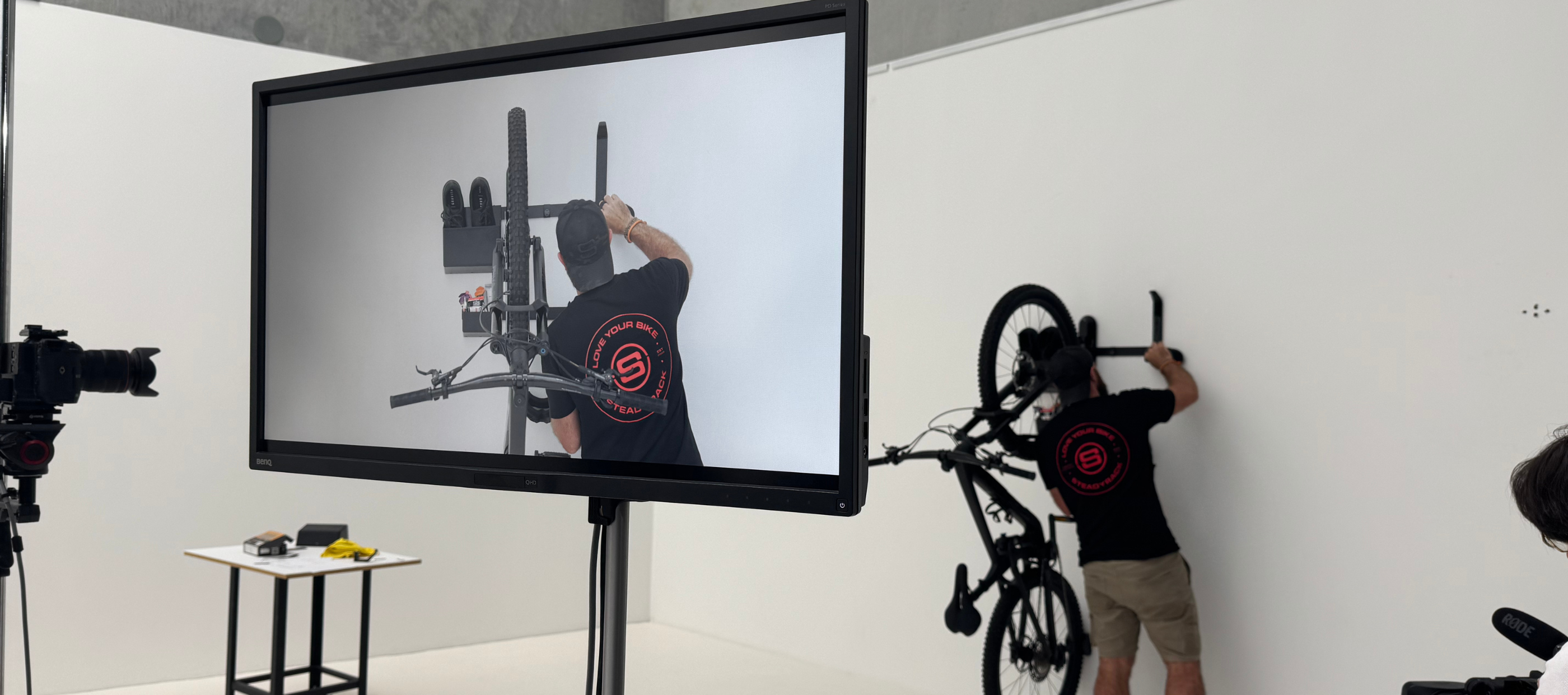Need help with your installation? The information on this page will provide you some tips and tricks to get the most from your installation.
When fitting your bike rack, we recommend you measure and mount your Steadyrack's to suit each individual bike following the installation instructions for optimal performance.
Installing Your Classic Range Steadyrack
Your Steadyrack comes with fixings for Masonry (brick/concrete) or Timber installation and can be mounted on any structurally sound vertical surface. If installing on a different surface, such as steel, additional fixings may be needed. For full instructions, download the installation manual or watch the video.
We do not recommend installing your Steadyrack into gyprock, plasterboard, or drywall. Doing so will void your Steadyrack warranty. The provided wall plugs are for masonry use only.
Installing Your ProFlex
Your ProFlex rack is supplied with all appropriate fixings for timber and masonry installation and can also be installed on any structurally sound vertical surface. Follow the installation manual or watch our simple installation video to learn more!
We do not recommend installing your Steadyrack into gyprock, plasterboard, or drywall. Doing so will void your Steadyrack warranty. The provided wall plugs are for masonry use only.
Installing Your GearMate
Your GearMate is installed by attaching all components to the SteadySpine behind your rack. The SteadySpine comes included with the ProFlex Range, but can be purchased additionally to add behind existing Classic Range racks. Download the installation manual or watch our easy installation videos for more information.
Installing Your End Caps
Watch our short clips on how to install the Classic Range or ProFlex Range end caps.
Installing Your Rear Tyre Rest
DOWNLOAD MANUALTo make things easy for you, we have included the installation for both the ProFlex and Classic Range rear tyre rests. Watch the end of the installation videos to learn more.
Please note, the ProFlex rear tyre rest requires the dovetail mounting plate for installation.
We do not recommend installing your rear tyre rest into gyprock, plasterboard, or drywall. Doing so will void your Steadyrack warranty. The provided wall plugs are for masonry use only.


